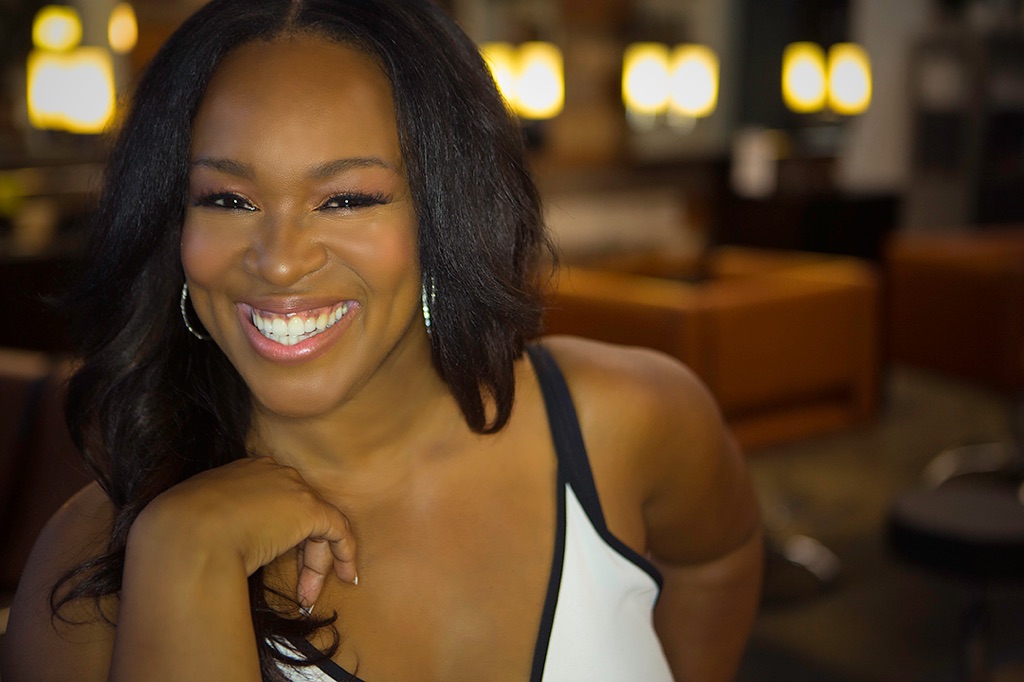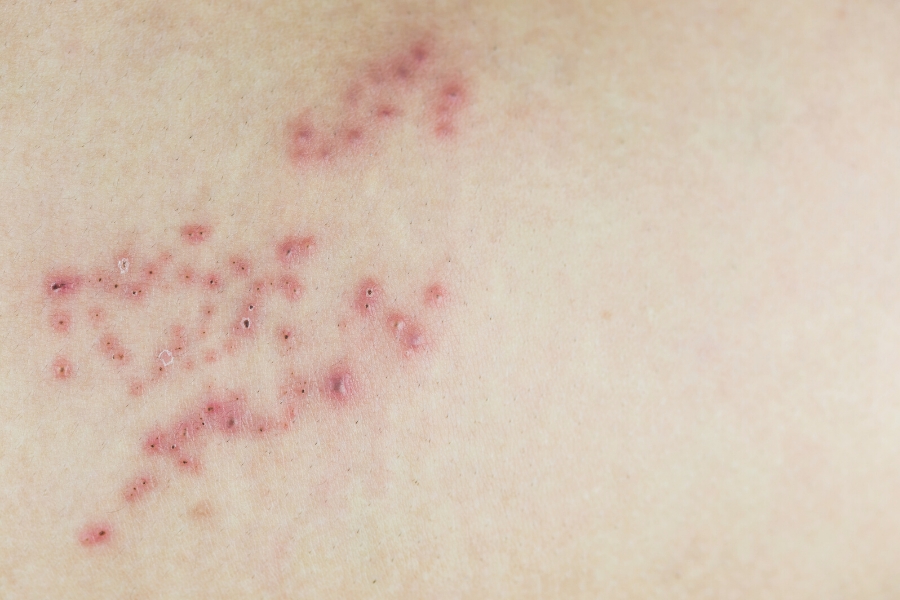Fighting Folliculitis Overcoming Ingrown Hairs, Razor Bumps, and More
Written by Cole PattersonFolliculitis is a term skin care professionals are familiar with. It is a skin condition that occurs in areas where hair grows such as bikini, legs, underarm, chest, back, and the face. Folliculitis is caused by improper hair removal, clogged follicles, and friction against the skin. Hairs are trapped underneath the skin causing inflammation known as folliculitis. The inflamed hair follicles can be characterized as superficial folliculitis, namely bacterial folliculitis, pseudofolliculitis barbae, pseudomonas folliculitis, or pityrosporum folliculitis. Some cases of folliculitis are more severe than others. Deep folliculitis is linked to sycosis barbae (hair loss) or furunculosis (boils). Although deep folliculitis is more severe, superficial folliculitis can form into deep folliculitis, resulting in reoccurring lesions and scarring. Folliculitis, for both men and women, is a constant problem because of its painful and unsightly appearance on the skin. Although folliculitis is common, knowing the different forms and its severity can help professionals determine the best cure, treatment, and prevention for their clients.
PSEUDOFOLLICULITIS
The most common folliculitis is pseduofolliculitis, affecting both men and women in areas where hair is grown. Using techniques and tools to remove hair increases the possibility of folliculitis. Although pseduofolliculitis is more common in the genital area and the bearded
area for men, it also occurs on the back, legs, arms, underarms, and buttocks due to the constant friction from clothing worn daily. For women, the worst cases of pseduofolliculitis appears in the bikini area. Cases of pseduofolliculitis have been seen in the genital for men, with the new wave of men partaking in the manscaping trend. However, men are more commonly faced with pseudofolliculitis barbae in the bearded area because of their daily grooming. Grooming regularly increases the risks of folliculitis because the hairs on the face grow rapidly and are difficult to maintain between shaving. When the hair is cut, the tip of the shaft hooks back into the skin. Men tend to shave daily or use a multiple-blade razor to obtain a close, smooth shave; however, this increases the possibility of folliculitis because the hair is cut too short. The hair is cut close to the surface of the skin causing it to not fully exit, and, instead, it reenters, causing the ingrown hair to become causing inflamed.
During the growing phase, the follicle becomes irritated and develops redness around
the area as a defense signal to the body. As the hair remains trapped underneath the skin, it becomes infected, forming painful, pus-like bumps around the follicle. As the hair struggles to exit, more hairs continue through the growth cycle causing the area to itch and even burn. The old hair gets embedded deeper as the new hairs continue through the cycle. Until the hair grows out or is removed from the skin completely, the symptoms worsen, causing inflammation to the follicle and the skin.
Pseudofolliculitis contributes to razor bumps. Although razor bumps are similar to ingrown hairs, there are usually no hairs trapped in the follicle or skin with razor bumps, which are usually caused by infection or inflammation surrounding the follicle. Due to the tedious nature of removing hair singularly with tweezers or lancets, special attention and patience is required to effectively remove ingrown hairs from the skin. Be careful not to break the hairs when removing ingrown hairs, as constantly picking and pulling can cause trauma resulting in permanent damage to the skin. Preparing the skin prior to shaving and implementing treatments post-shave can prevent pseudofolliculitis barbae and long-term damage to the hair follicle and the skin. Pseudofolliculitis barbae can be painful and unflattering for men, especially men of color, because their hair tends to be coarse, thick, and curly, making it harder to maintain unblemished skin or prevent folliculitis. Although shaving is often part of a man’s daily regimen, it is wise to suggest cutting back on how often men shave to avoid ingrown hairs and razor bumps. It may be difficult to remove ingrown hairs effectively without causing trauma if professionals are not highly skilled in the removal of ingrown hairs. Due to the oiliness of men’s skin, the overproduction of sebum can contribute to infected follicles. The skin produces sebum, which provides lubrication for the hair follicle; however, if inflammation occurs, the oils can build up, pushing the hair deeper into the skin as it continues to grow and form pus-like bumps around the follicle while the hair is trapped underneath the skin. Environmental debris can enter the follicle through the surface of the skin as the dirt and debris attaches itself to the hairs, penetrating the dermal layer of the skin and causing the follicle to inflame. Once the follicle is inflamed, recurrent follicle infection can cause furunculosis or cause the infection to spread to other areas of the body such as the stomach, back, legs, and buttocks.
Folliculitis is troublesome, causing whiteheads, pustules, pimples, bumps, sores, burning, swelling, and itching. Bacteria or fungus can enter the hair follicle, causing trauma to the area known aspityrosporum folliculitis.
PSEUDOMANAS
Pseudomanas is another form of folliculitis that is caused by infectious bacteria found in hot tubs. The infection seeps into the hair follicles causing the follicle to be inflamed. Although pityrosporum and pseudomonas folliculitis are not caused by ingrown hairs, they affect the areas where hair grows. Therefore, non-hair removal related folliculitis should be handled by a physician to properly diagnose its symptoms for the protection of the aesthetician and the safety of the client. Understanding the skin’s reaction to protect the body from uncommon or foreign particles is the first step to prevention.
PREVENTION
Folliculitis appears to be a more frequent battle for people of color or those with coarse, curly hair than for those with straighter and fine hair. Although the hairs on the face, legs, back, and genital areas may be different, folliculitis affects the areas the same way. However, some cases are more problematic due to the area in which folliculitis appears. Depending on the symptoms, signs, and severity of folliculitis, most conditions are treatable. Skin care professionals are constantly dealing both superficial and deep with cases of folliculitis. Prevention for folliculitis may require pre- and post-treatment regularly – it is curable. Yet, acute folliculitis may result in hair loss due to damage of the hair follicle and, therefore, skin care professionals should advise clients to consult a medical physician for long-term treatment. Signs of folliculitis are visible on the skin or underneath the skin, appearing raised or inflamed. Most cases of folliculitis aestheticians deal with are linked to ingrown hairs, shaving, or waxing. Prepping the skin prior to hair removal, such as exfoliating to remove dead skin and unclog pores, can reduce folliculitis. Incorporating treatments between waxing or shaving will help further prevent folliculitis. Furthermore, unblocking the pores and follicles will help prevent the hairs from re-entering the skin and will keep the skin free of infection and bacteria. Unlike shaving, waxing removes the tip of the hair shaft closest to the skin. Although waxing may reduce the chances of getting folliculitis, it does not always prevent folliculitis. With shaving, the hairs have a greater chance of coiling back into the skin, especially if the hairs appear to be curly and coarse. Once the dead skin cells are removed, use a warm towel to open the follicle or soften the hair shaft to facilitate the process of removing the hair quicker and easier. Between waxing or shaving, it is best to exfoliate the skin every two to three days to prevent the hair from entering the skin as it goes through its growth cycle. Using exfoliating products along with a loofah sponge can help lift the hairs from the skin and remove all dead skin, so the hairs will not get trapped between the dead skin and the surface of the epidermis. To further prevent issues post-hair removal, avoid direct contact to the shaved or waxed area immediately after. Constant friction and pressure on the newly shaved or waxed area can irritate the skin and cause redness. Direct contact with clothing or material that can irritate the skin will block the follicle, cause the body to heat up, and make it more susceptible to infection and folliculitis. Post-hair removal treatment is just as important as pre-hair removal treatment during the stages when the hair is subject to folliculitis. The biggest problem aestheticians face is how to solve folliculitis during the hair growth phase when the hair is not present in the regression stage.
Innovative techniques, tools, and products are constantly being tested to solve the problem of folliculitis. Both medical professionals and licensed aestheticians are incorporating light therapy, laser, or electrolysis as alternative solutions for clients.
When waxing, the warmth helps open the hair follicle to make it easier for the hair to be removed. Waxing removes the hair from the root of the follicle, but sometimes the hair can be too short to remove; therefore, clients still may develop folliculitis. The softer the hair texture, the easier for the wax to remove the hair. Those with a thicker texture may require waxing in the area more than once, although this is not suggested because it may cause skin irritation.
Professionals should always protect the client, as well as themselves before performing any service. If the problem is out of the scope of their degree of training, the aesthetician should refer clients to a medical professional to seek treatment for more severe conditions. Licensed professionals should understand there is a vast difference when performing hair removal services and treating folliculitis on darker skin, such as African American, Indian, Greek, and Middle Eastern clients. Treating ethnic skin and preventing folliculitis may require a better understanding when approaching each client’s needs to reduce long-term damage to the follicle and scarring to the skin.

Cole Patterson is a celebrity makeup artist and male groomer. She has been honing her expertise behind the scenes, gracing the faces of some of Hollywood’s most famous stars on the big screen in the film and television industry.
